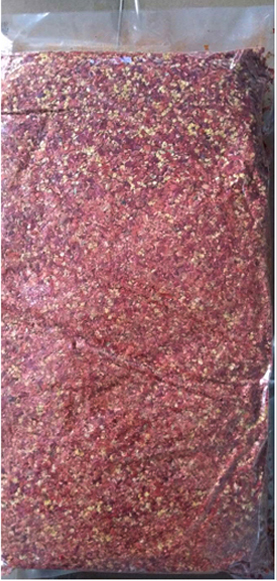Nov . 23, 2024 19:23 Back to list
Premium Whole Red Chili Peppers for Exceptional Flavor and Culinary Delight
The Significance of High-Quality Whole Red Chili
When it comes to spices, few can rival the vibrant flavor and versatile uses of high-quality whole red chili. This richly colored ingredient not only piques our taste buds but also carries a deep cultural significance around the globe. From enhancing culinary creations to health benefits, the importance of whole red chili is undeniable.
Culinary Versatility
Whole red chili is a staple in many cuisines worldwide. From Indian curries to Mexican salsas, this ingredient brings a distinctive warmth and depth of flavor that can elevate any dish. There are various types of red chili, each with its unique characteristics. For example, the Kashmiri chili is revered for its bright red hue and mild heat, making it ideal for coloring dishes without overwhelming them with spice. In contrast, varieties like the Thai bird’s eye chili or the Naga chili pack a formidable punch, catering to those with a penchant for heat.
Moreover, whole red chili can be used in multiple forms. It can be roasted, ground to powder, or infused into oils, each method enhancing the flavor profile differently. Utilizing whole dried chilies, chefs can add both texture and a robust flavor that ground chili powders often lack. Furthermore, whole chilies can be rehydrated for soups, stews, and marinades, making them an essential element in both professional kitchens and home cooking.
Health Benefits
Beyond their culinary appeal, high-quality whole red chilies are laden with health benefits. They are rich in vitamins A, C, and E, essential for maintaining a healthy immune system. The vibrant red color is due to carotenoids, antioxidants that contribute to better overall health. Capsaicin, the compound that gives chili its heat, has been linked to numerous health benefits, including pain relief, improved metabolism, and potential cancer-fighting properties.
high quality whole red chili

Studies suggest that capsaicin can enhance metabolic rate, helping in weight management. Moreover, the compound has been touted for its potential in reducing inflammation, aiding digestion, and promoting heart health. Regular consumption of moderate amounts of chili can boost circulation and improve cardiovascular health while potentially lowering cholesterol levels. Including high-quality whole red chili in one’s diet can therefore contribute not just to delicious meals but also to a healthier lifestyle.
Cultural Significance
The global journey of red chili reflects diverse cultural narratives. Originating from the Americas, chili peppers were brought to Europe and Asia during the Columbian Exchange, subsequently integrating into various regional cuisines and culinary traditions. In Indian cuisine, for example, red chili is not just an ingredient; it holds a historical role in spice trade and regional identity. The use of chili in religious and cultural ceremonies is also notable, symbolizing prosperity and protection.
In Mexico, red chili varieties are fundamental to traditional dishes, embodying the nation’s rich culinary heritage. The popularity of chili in various forms, such as mole sauce or as a garnish in tacos, illustrates its versatility and importance.
Choosing High-Quality Whole Red Chili
To maximize both flavor and health benefits, selecting high-quality whole red chili is crucial. Look for chilies that are bright in color, firm in texture, and free from blemishes. High-quality variants will have a robust aroma, indicating their freshness and potency. When purchasing, consider sourcing from reputable suppliers who prioritize organic cultivation methods, ensuring that the chilies are free from harmful pesticides and chemicals.
In conclusion, the significance of high-quality whole red chili transcends mere culinary use. It embodies a fusion of flavor, health benefits, and cultural heritage. Whether you are an adventurous cook looking to spice up your dishes or someone seeking health improvements, incorporating whole red chili into your diet is a delicious and beneficial choice. By appreciating the depth of this remarkable spice, we honor its journey and the traditions that have shaped its role in kitchens around the world.

